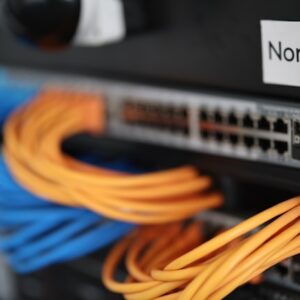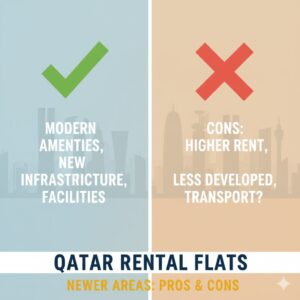In today’s fast-paced digital world, enterprises can’t afford to let outdated software hold them back. Businesses need agile, scalable, and secure applications to stay competitive—and that’s where application modernization services come in. Modernizing legacy applications not only improves performance and security but also enables innovation through cloud technologies, automation, and microservices.
Let’s explore what application modernization really means, why it’s essential for enterprises, and how leading application modernization companies help businesses accelerate their digital transformation journey.
What is Application Modernization?
Application modernization refers to the process of updating, refactoring, or rebuilding older software systems to align with modern business needs and technologies. These legacy systems often run on outdated architectures, programming languages, or on-premises infrastructure that hinder agility, scalability, and integration.
At its core, application modernization aims to:
- Improve scalability and flexibility
- Enhance user experience
- Reduce maintenance costs
- Strengthen security and compliance
- Enable integration with cloud, APIs, and new technologies
In simple terms, modernization bridges the gap between legacy systems and modern IT environments helping organizations stay future-ready.
Key Components of Application Modernization
- Refactoring – Restructuring existing code to make it more modular and maintainable without changing its functionality.
- Replatforming – Moving applications to a modern platform, like the cloud, with minimal code changes.
- Rehosting (Lift and Shift) – Migrating applications to a new environment without major alterations.
- Rebuilding – Redeveloping the application from scratch using modern technologies and architectures such as microservices.
- Replacing – Replacing outdated software with new, cloud-native applications.
By adopting the right app modernization services, enterprises can enhance operational efficiency and stay resilient in an ever-evolving digital landscape.
Why Do Enterprises Need Application Modernization?
Modern business challenges demand fast, data-driven, and secure systems. However, many enterprises still rely on legacy software developed decades ago—rigid, costly, and often incompatible with modern technologies.
Here are the top reasons why enterprises invest in legacy application modernization services:
1. Enhanced Business Agility
Modern applications enable faster deployment cycles, automated testing, and integration with DevOps pipelines. This means businesses can adapt quickly to market changes and customer needs.
2. Cost Optimization
Maintaining legacy systems is expensive. Old hardware, outdated licenses, and specialized maintenance all drive costs upward. By modernizing, organizations reduce total cost of ownership (TCO) and operational inefficiencies.
3. Improved Security and Compliance
Outdated systems are more vulnerable to cyberattacks and often fail to meet modern compliance standards. Legacy modernization services ensure security patches, encryption, and compliance updates are seamlessly integrated.
4. Cloud Adoption and Scalability
Most legacy systems weren’t designed for cloud environments. Through application modernization, enterprises can migrate to scalable cloud platforms like AWS, Azure, or Google Cloud—enabling higher performance and flexibility.
5. Better User Experience
Modernized applications deliver enhanced UX through responsive designs, faster performance, and integration with AI and analytics tools. This not only boosts productivity but also improves customer satisfaction.
6. Data-Driven Decision Making
Modern applications allow real-time analytics, enabling smarter business decisions. Integrating AI and ML capabilities is nearly impossible with legacy systems, making modernization essential for data-driven growth.
In short, modernization is not just a technology upgrade it’s a strategic business move to unlock innovation, agility, and long-term resilience.
Application Migration Strategies
When it comes to modernizing applications, one size doesn’t fit all. The right strategy depends on business goals, current infrastructure, and future scalability requirements. Leading application modernization companies typically follow one or more of the following strategies, often referred to as the “6 R’s of Modernization”:
1. Rehost (Lift and Shift)
The quickest approach—moving applications to the cloud without altering the code. It’s ideal for organizations looking to reduce infrastructure costs fast.
2. Replatform
This involves making minimal adjustments to take advantage of cloud features like auto-scaling or managed databases while maintaining core functionality.
3. Refactor (Re-architect)
Restructuring or re-architecting the existing codebase to improve performance, scalability, and maintainability. Commonly used when adopting microservices or containers.
4. Rearchitect
A more advanced form of refactoring transforming a monolithic application into a cloud-native, modular architecture for long-term flexibility.
5. Rebuild
Creating the application from scratch using modern frameworks and tools. Although costlier upfront, it ensures maximum compatibility with future technologies.
6. Replace
When the legacy system is too outdated, replacing it entirely with a modern SaaS or custom-built solution may be the most cost-effective long-term option.
Choosing the right strategy is crucial and often guided by an experienced application modernization company that evaluates your current ecosystem, dependencies, and business priorities.
Application Modernization Methodology
A successful modernization journey requires a well-structured methodology that minimizes risk and maximizes ROI. Here’s a step-by-step breakdown of how top app modernization services providers execute modernization projects:
1. Assessment and Discovery
The process begins with analyzing existing legacy systems—identifying pain points, technical debt, dependencies, and business objectives. This phase helps determine which applications should be modernized first.
2. Strategy and Roadmap Development
A detailed roadmap is created, outlining modernization goals, priorities, and timelines. This includes choosing the right migration strategy—refactor, rehost, or rebuild—and selecting cloud platforms or frameworks.
3. Architecture Design
Modern architectures such as microservices, containers, or serverless computing are designed to support scalability, flexibility, and faster deployments.
4. Implementation and Migration
Applications are modernized through code transformation, integration with APIs, or migration to the cloud. This phase often involves continuous integration and delivery (CI/CD) pipelines for smooth deployment.
5. Testing and Optimization
Comprehensive testing ensures that modernized applications perform efficiently, meet security standards, and align with business requirements. Performance tuning and user acceptance testing are key here.
6. Monitoring and Continuous Improvement
Modernization doesn’t end at deployment. Continuous monitoring, feedback loops, and iterative updates help keep the application optimized and future-proof.
By following this structured methodology, legacy application modernization services ensure minimal disruption and maximum business value.
How Durapid Helps You
At Durapid, we specialize in delivering end-to-end application modernization services that help enterprises reinvent their legacy systems for the cloud era. Our team combines deep technical expertise with a strategic approach to ensure seamless modernization with measurable results.
Our Core Offerings Include:
- Legacy Application Modernization Services – Transform outdated systems into agile, secure, and cloud-ready applications.
- App Modernization Services – From assessment to re-architecture, we ensure your applications are aligned with modern frameworks and technologies.
- Cloud Migration and Optimization – Move to the cloud with confidence, leveraging scalability and cost efficiency.
- Microservices and API Integration – Break down monolithic architectures for better agility and faster development cycles.
- Continuous Modernization Support – Post-modernization maintenance, monitoring, and optimization to keep your systems performing at their best.
Why Choose Durapid as Your Application Modernization Company?
- Proven Expertise: Years of experience across diverse industries and platforms.
- Tailored Strategies: Custom modernization roadmaps aligned with your unique business goals.
- End-to-End Support: From assessment to post-deployment optimization.
- Cloud-First Approach: Certified experts in AWS, Azure, and Google Cloud.
- Agile Execution: Faster time-to-market with minimal business disruption.
At Durapid, we believe modernization is not just about technology—it’s about enabling your business to innovate, scale, and lead in a rapidly evolving digital economy.



